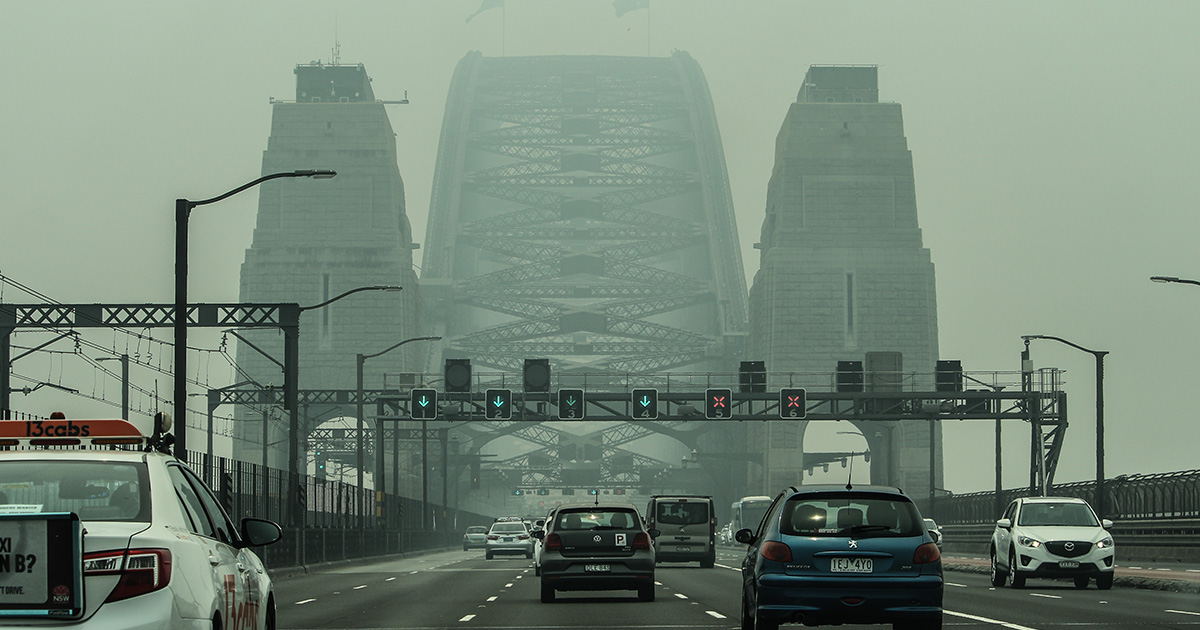The Woolcock Institute of Medical Research

Is it something in the air we breathe?
COPD (Chronic Obstructive Pulmonary Disease or emphysema) is labelled as a “smoker’s disease” by many but increasingly the air we all breathe, even in a country like Australia where pollution levels are considered “acceptable”, is being identified as a risk factor for COPD and other conditions such as Parkinson’s and ADHD.
The World Health Organisation has said that tobacco smoking accounts for 70 percent of COPD cases in high to middle income countries, but in low to middle income countries, 30-40 percent of COPD is caused by household air pollution.
“They make no mention of general air pollution,” says Distinguished Professor Brian Oliver who leads the Woolcock’s Respiratory Cellular and Molecular Biology research group and is recognised worldwide for his work on the pathology and mechanisms of the disease. “That’s interesting because a recent study found that a very small shift in the level of air pollution exposure causes an increased risk of developing COPD. Essentially, if you go from living two streets away from a major highway to living next to that highway, your risk of developing COPD would be increased.”
“That’s how dangerous air pollution is. I believe it’s an understudied, under-researched, under-appreciated source of disease, especially respiratory disease.”
As a research scientist, Professor Oliver’s job is to back his beliefs and put them to the test in the lab in an effort to prevent and treat disease.
WHAT IS 'ACCEPTABLE' AIR POLLUTION?
Despite the many years and billions of dollars invested in research, we still don’t know exactly what causes COPD. “It should be a simple question, but it’s not,” says Professor Oliver. “It’s probably caused by the inhalation of noxious gases, but we also know there are risk factors – if you're born with small lungs, if you have respiratory infections in early childhood, if you're exposed to second-hand cigarette smoke, if you have a history of asthma or you’ve had a rapid decline in lung function before the age of 40. All of those risk factors contribute to your likelihood of developing COPD.”
And then there’s air pollution. The size of the pollution particles we inhale, especially the particulate matter, can have different effects on our bodies. The smaller the particle, the further they penetrate. Finer particles can travel beyond the lung, through our bodies and, in pregnant women, across the placenta to affect an unborn baby.
“It's not good news,” says Professor Oliver. “So we’ve spent a long time trying to model the effects of air pollution at levels experienced in Australia in mice and we’ve found that, after only a couple of weeks, it induces inflammation in the lungs. We then looked at the effect of air pollution at low levels such as those found in Australia during pregnancy and found that it caused chronic inflammation, hyperreactive airways and the physical symptoms of asthma in the offspring and the physical symptoms of emphysema and COPD in mothers.”
Want to stay up to date with our research on sleep and respiratory conditions?
Sign up to our monthly newsletter
FEELING IT IN YOUR BONES
The Respiratory Cellular and Molecular Biology research group has also collaborated with experts in bone biology at Imperial College London. Their work showed that if you expose animals or people to air pollution, it reduces bone strength and that bones may harbour heavy metal from pollution which, as they remodel, can be released. “So, living in a polluted environment during childhood may increase your exposure risk as an adult from a bone biology point of view.”
In addition, the Group worked with experts at Sydney’s Royal North Shore and Westmead Hospitals on mouse models looking at the effects of air pollution during pregnancy on offspring and found that it caused dysfunctional kidneys, lungs and livers.
“We’ve looked at the lung brain axis in collaboration with researchers at the University of Technology Sydney and in China and, in those mice exposed to air pollution, we can measure things which relate to anxiety and depression in humans. We can see premature brain ageing and a range of other neurological effects. We know from population studies that if you live in a polluted country or next to a busy road, there’s an increased risk of Parkinson’s Disease and your children are more likely to have ADHD. Now we’ve been able to show that in the lab."
And, hopefully, we will be able to build on that knowledge in the future to inform policy, compel action, prevent disease and develop treatments so we can all breathe more easily.










